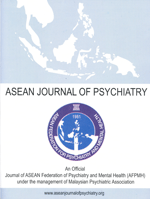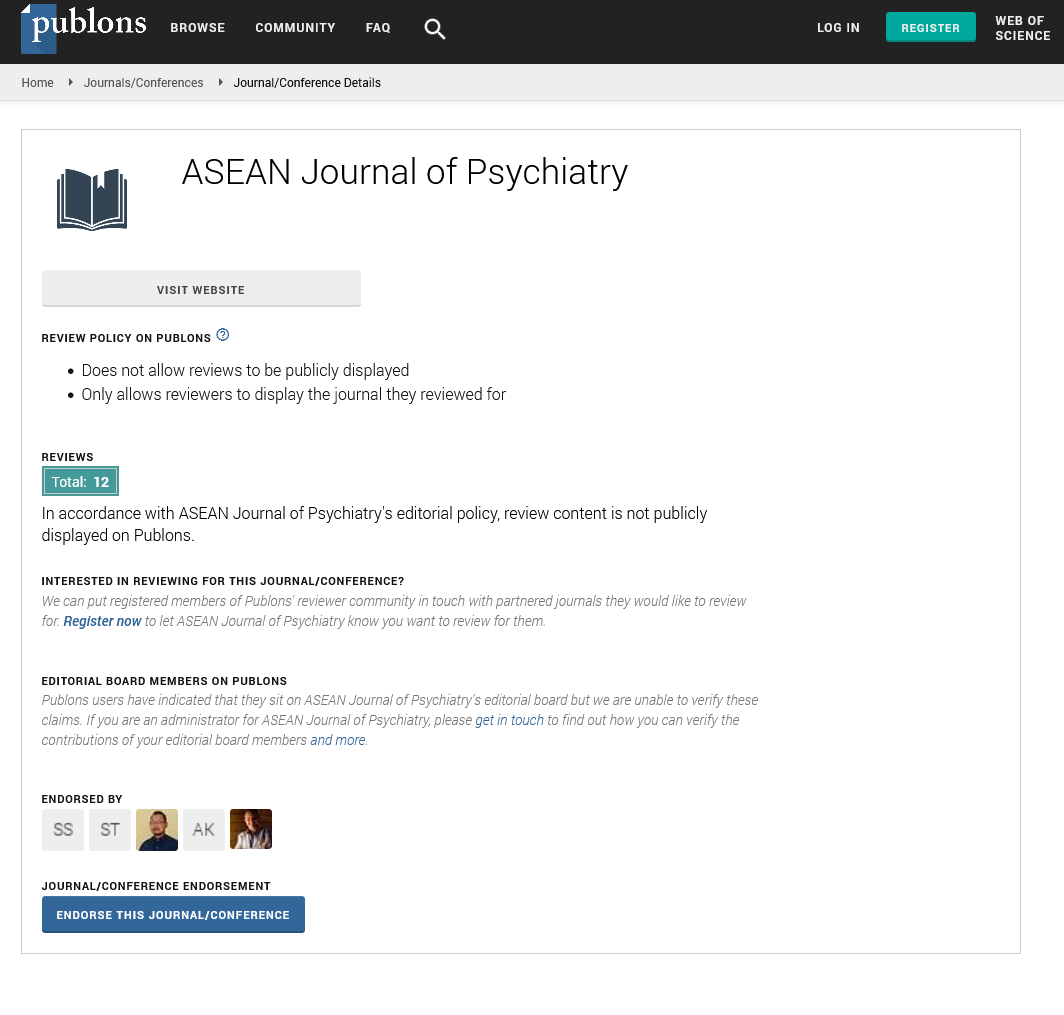Introduction
The escalating levels of stress among students in
India represent a pervasive issue not only within
the nation but also on a global scale. The severity of
the problem is underscored by India’s alarmingly
high suicide rates among individuals between
15 years to 29 years. According to the National
Crime Records Bureau (NCRB), the distressing
statistics reveal that every hour witnesses the
tragic occurrence of a student taking their own life
in India, culminating in an average of twenty-eight
student suicides within a 24-hour period during
2022. In the same year, India witnessed a staggering
1.3 lakh suicides, with students constituting 8%
of the total, while the unemployed comprised
10%. The multifaceted reasons contributing to
this alarming trend range from academic failure
and unemployment to the pervasive specter of depression. Psychologists posit that students
grapple with anxiety and traumatic disorders,
primarily rooted in the fear of examinations and
the burden of parental expectations, which impel
them to achieve superior grades. A recent survey
sheds light on the pervasive parental pressure,
with a substantial 66% of students reporting that
their parents exert significant stress for enhanced
academic performance. Notably, non-graduate
parents exerted more pressure compared to
their graduate and postgraduate counterparts.
The repercussions of such heightened pressure
manifest in various detrimental forms, including
sleep deprivation, eating disorders, excessive
worrying, academic dishonesty, burnout, waning
interest in hobbies, social withdrawal and the
adoption of harmful coping mechanisms such as
smoking and narcotics usage. This research aims
to look into the detailed layers of this pressing issue, aiming to comprehend its underlying causes
and propose interventions to reduce the adverse
impact on the well-being of students in India.
The stress occurring among school students is
complicated and related with almost all aspects of
schools such as both academic and psychosocial.
Students are often faced by enormous academic
pressure that may comprise various factors such
as examinations, assignments and striving for
academic perfection. Another pressure comes
in form of expectations from parents, teachers
and peers; this results into a fear of failure and
an eternal search for perfection. The emotional
distress experienced by students is due to factors
related to their social dynamics, such as harm,
making friends and fitting in. External factors
such as family problems, monetary difficulties and
household challenges contribute to stress buildup.
Additionally, other forms of stress in the landscape
involve balancing several obligations as children
grow up, dealing with transitions through life like
puberty or college admission period, as well as
adapting to new surroundings. Additionally, other
technical related stresses like uncertainties over
future, health concerns also make it impossible for
school students to lead normal life. These complex
stressors in various forms act upon the wellness of
student’s minds and strategies of coping.
Literature Review
The study linked academic stress to students’ mental
health, emphasizing immense pressure within the
education system. High expectations from parents
and schools contribute to demoralization, lacking
adequate support. Positive academic engagement
aligns with better mental well-being. Private
school students face heightened stress due to
excessive assignments, while government school
students, often from disadvantaged backgrounds,
experience varying levels of stress due to limited
exposure and resources.
A study on diverse strategies were identified to
alleviate stress among individuals. The research
emphasized the efficacy of engaging in regular
physical exercise as a fundamental method to
reduce stress. Additionally, the adoption of various
time management tools and active participation
in leisure activities were proposed as beneficial
approaches for addressing stress-related concerns
among students. The study also recommended
creating a conducive environment within
educational institutions to reduce stress levels, highlighting the importance of altering teaching
styles and introducing mentorship programs as
refreshing elements in the educational system.
A study into stress levels among higher
secondary students revealed notable gender and
environmental distinctions. The research findings
indicated that male students experience higher
stress levels compared to their female counterparts.
Moreover, academic stress was found to be more
pronounced among urban students than their
rural counterparts. Notably, students attending
private schools exhibited elevated stress levels in
comparison to their counterparts in government
schools. Furthermore, the study stated that students
pursuing the Science stream faced greater stress
when contrasted with their peers in the arts stream.
An examination of stress levels among students in
professional studies focused on the predominant
role of curriculum and instructional parameters,
contributing to 86% of the identified stress
factors. Subsequently, placement related concerns
constituted 63% of stress inducing factors, while
assessment and teamwork issues accounted for
41% and 24%, respectively. The study addressed
deeper into the identification of micro issues
within these overarching parameters, outlining
twelve sub-issues specifically associated with
curriculum and instruction. The discernment of
these sub-issues not only offered a comprehensive
understanding of stressors but also provided
academic administrators with valuable studies to
initiate targeted efforts aimed at alleviating the
severity of academic stress [1].
Significance of the study
The importance of stress as a determinant of school
student’s health cannot be over emphasized. It
helps in identifying stressors such as peer pressure
among others with regards to their academic
progress; social interactions; and external influence
towards interventions aimed at curbing harmful
substance abuse. Knowing the causes of this kind
of stress helps in avoiding mental illnesses and
also enhancing academic achievements. Also, it
calls for systematic restructuring of educational
systems as well as shifts in societal expectations
geared towards creating strength-friendly settings.
Overall, this study serves as a push towards mental
health in education, creating healthy learning
environments, and encouraging children to handle
stress properly toward their overall development
[2-4].
Scope of the study
The study on stress among school student’s
studies into a comprehensive analysis of various
stressors impacting students’ lives, encompassing
academic, social and personal spheres. It studies
the multitude of factors causing stress, including
academic pressure, familial expectations, social
dynamics and external stressors like financial
difficulties. The study also aims to identify
coping mechanisms, mental health implications
and differences in stress levels among students
from diverse socio-economic backgrounds
and educational settings. It offers studies into
interventions and support systems to reduce stress,
making a deeper understanding of how stress
impacts students’ overall well-being and academic
performance.
Objectives
• To study the socio demographic data of the
respondents
• To access the level of stress among the
respondents
• To give suitable suggestions to overcome the
stress
Materials and Methods
Research design
The study is a descriptive research design
Universe and sampling design: The universe of
the present study consist of 30 respondents studying
9th and 10th standard students in St. Johns Higher
Secondary School, Irungalur, Trichirappalli. The
researcher collected 30 samples by using simple
random sampling method [5].
Tools of data collection
The researcher collected the data using self-
prepared questionnaire which consist of 30
questions to analyze the stress level of students in
the school.
Data collection
The researcher collected the data through the
structured questionnaire model, by that the socio
demographic data and the stress among the
students were analyzed [6].
Source of data
The present study is based on primary data and
secondary data are collect from every possible
source.
Primary data: The primary data has been
collected among the students by using self-
prepared questionnaire.
Secondary data: The secondary data of the study
are collected from journals, book, magazines,
articles, governments’ records and websites so on.
Materials and Methods
Research design
The study is a descriptive research design
Universe and sampling design: The universe of
the present study consist of 30 respondents studying
9th and 10th standard students in St. Johns Higher
Secondary School, Irungalur, Trichirappalli. The
researcher collected 30 samples by using simple
random sampling method [5].
Tools of data collection
The researcher collected the data using self-
prepared questionnaire which consist of 30
questions to analyze the stress level of students in
the school.
Data collection
The researcher collected the data through the
structured questionnaire model, by that the socio
demographic data and the stress among the
students were analyzed [6].
Source of data
The present study is based on primary data and
secondary data are collect from every possible
source.
Primary data: The primary data has been
collected among the students by using self-
prepared questionnaire.
Secondary data: The secondary data of the study
are collected from journals, book, magazines,
articles, governments’ records and websites so on.
Results and Discussion
The below tables confirms the distribution of
the demographics of the surveyed population. It
reflects a higher representation of females (65.6%)
compared to males (34.4%). Both genders are
evenly distributed across the specified age groups.
Urban areas show the highest respondent count
(45.2%), followed by rural (29%) and semi-urban
(25.8%) dwellers [7]. Predominantly, families
with an income below 1 lakh annually (74.2%)
form the largest group. Parental qualifications
vary, with 34.4% from households where both
parents are graduates, 18.8% with one graduate
and 46.9% having parents with an education level
of Higher Secondary Certificate (HSC) or below.
This demographic distribution reveals key data
into the surveyed population’s socioeconomic and
educational background (Tables 1 and 2).
Table 1. Distribution of respondents by their socio demographic details.
| Variables |
No of respondents |
Percentage (%) |
| Gender |
| Male |
20 |
34.40 |
| Female |
10 |
65.60 |
| Age |
| Between 14 years and 15 years |
17 |
53.10 |
| Between 16 years and 17 years |
11 |
34.40 |
| Above 17 years |
2 |
12.50 |
| Domicile |
| Urban |
13 |
45.20 |
| Semi urban |
8 |
25.80 |
| Rural |
9 |
29 |
| Annual income |
| Below 1 lakhs |
22 |
74.20 |
| 100000 to 250000 |
5 |
16.10 |
| 250000 to 500000 |
0 |
0 |
| Above 500000 |
3 |
9.70 |
| Qualification of parents |
| Both are graduates |
10 |
34.40 |
| Only one is the gratitude |
6 |
18.80 |
| Both have completed HSC or below |
14 |
46.90 |
Table 2. Distribution of the level of stress.
| Variables |
No. of despondence |
Percentage (%) |
| Advice by their family |
| Never |
4 |
12.50 |
| Rarely |
11 |
9.40 |
| Sometimes |
12 |
40.60 |
| Frequently |
3 |
37.50 |
| Mobile phone usage |
| Never |
4 |
12.50 |
| Rarely |
5 |
15.60 |
| Sometimes |
13 |
25 |
| Frequently |
8 |
46.90 |
| Social media addiction |
| Never |
3 |
4.10 |
| Rarely |
2 |
4.10 |
| Sometimes |
9 |
28.10 |
| Frequently |
17 |
59.40 |
| Unsafe about their surrounding |
| Never |
3 |
10 |
| Rarely |
6 |
21.30 |
| Sometimes |
5 |
16.70 |
| Frequently |
16 |
53.30 |
| Exams |
| Never |
9 |
29 |
| Rarely |
6 |
16.10 |
| Sometimes |
9 |
29 |
| Frequently |
6 |
16.10 |
| Scorings and grades |
| Never |
0 |
0 |
| Rarely |
9 |
29 |
| Sometimes |
5 |
16.10 |
| Frequently |
9 |
29 |
The stress distribution across factors highlights
family advice impacting 40.6% occasionally and
37.5% frequently, while mobile phone use leads to
46.9% experiencing frequent stress. Social media
contributes to stress for 59.4%. Feeling unsafe
impacts 53.3%, while exams affect 29% similarly.
Surprisingly, 29% face frequent stress due to
academic grades. These varied stressors underline
the need for comprehensive support and coping
strategies across multiple factors [8].
In relation to the causes of irritation resulting in
stress among students, it is apparent that over
half, at 65.6%, felt annoyed by advice given in
reference to them by their relatives. The high
percentage indicates the impact or even perceived
‘felt’ intrusion by the extended family members
on student’s mental health [9]. Also, a significant
12.5% said they were stressed by parental
commandments which could mean the influence
that can be attributed to the commands imposed
by fathers. Moreover, information about students’ mobile phone use also provides some useful clues
regarding students’ stress patterns. Shockingly, a
whopping 45.2% of those spending over 2 hours
on mobile devices feel stressed out. Given that
this high percentage implies the possibility of the
link between too much time spent on the screens
and increased stress in students. High percentages
reporting stress were observed for even lower time
brackets like one hour to two hours, suggesting
that prolonged use of mobile phones is associated
with stress [10].
The data shows that intervention is necessary
regarding family pressures, as well mobile phone
use to reduce stress among students. Stress induced
by parental advice can be lowered by strategies
which call for healthy parenting techniques
focusing on good communication and support.
Moreover, programs that promote safe use of
cell phones as well as training children about moderation of screen time may help lower stress
caused by long hours on phones [11]. Knowing
about these stressors and how they affect students’ mental well-being emphasizes the need for schools
to support and guide them towards a low stress
environment for the pupils. The findings therefore
give educators, parents and policymakers basis to
come up with intervention that reduce stress and
improve health, academic life for students.
Conclusion
The human body’s natural reaction to challenges
is stress. Students encounter stress from various
sources, and when it becomes chronic or reaches
high levels, it can impede their learning, memory
retention and academic achievements, irrespective
of their age or grade. Furthermore, stress has the
potential to adversely affect a student’s mental,
emotional and physical well-being. Teachers
and parents plays an important role in assisting
students in avoiding chronic stress by gaining
knowledge and a thorough understanding of
prevalent stressors. Addressing stress in students
is imperative, given its potential for serious and
harmful effects.
This study also emphasizes the importance of
creating a supportive environment where students
can seek help and guidance. Recommendations
include the introduction of school-based
counseling programs, stress management
workshops and making open communication
between teachers, students and parents to reduce
unnecessary pressure.
Limitations
The researcher had the limitations that he has selected only on school in Irungalur village,
Trichirappalli.
Findings
In this research the researcher finds that the data provides diverse emotions towards advicegiving
and a significant amount of people get offended particularly, by the relatives. Knowing what causes such student stress can aid advice
and support system geared towards reducing its impacts. The main issue that needs to be addressed is how to deal with corruption.
Heavy mobile and social media usage among
the majority population points to possible connection of screens and stress. In addition,
studying the effect of long-term screen exposure on stress and student’s mental health is a must.
Stressors emanating from school include postschool
fatigue, attending tuition regularly, having different feelings before assessments. The process of pinpointing stress triggers in the
educational setting will help for specific stress solutions.
Suggestions
The study reveals many important conclusions
about student stress triggers. The majority of students experienced significant academic pressure from mothers who imposed high
standards that in turn contributed greatly to
student stress. Parents, especially mothers,
should avoid putting too much academic
pressure on them because increased anxiety
among students occurs due to such high educational demands. Students also get irritated with advice especially from their relatives.
Fathers can be encouraged to give positive and
encouraging direction may as well help. The other major stressor noted was excessive screens
time particularly extensive phone usage as well
as Social Media. Since a lot of time is spent with
the screens, it’s advisable that students reduce their exposure to screens to relieve stress in them. Doing away with too much screen time
can reduce stress and help students have a
better equilibrium of their online life vs normal life activities which will be beneficial for their mental health.
References
- Subramani C, Kadhiravan S. Academic stress and mental health among high school students. Indian J Appl Res. 2017;7(5):404-406.
[Crossref][Google Scholar]
- Clark MM, Warren BA, Hagen PT, Johnson BD, Jenkins SM, et al. Stress level, health behaviors and quality of life in employees joining a wellness center. Am J Health Promot. 2011;26(1):21-25.
[Crossref][Google Scholar][PubMed]
- Dar T, Radfar A, Abohashem S, Pitman RK, Tawakol A, et al. Psychosocial stress and cardiovascular disease. Curr Treat Options Cardiovasc Med. 2019;21:1-7.
[Crossref][Google Scholar][PubMed]
- Hackett RA, Steptoe A. Type 2 diabetes mellitus and psychological stress a modifiable risk factor. Nat Rev Endocrinol. 2017;13(9):547-560.
[Crossref][Google Scholar][PubMed]
- Batty GD, Russ TC, Stamatakis E, Kivimäki M. Psychological distress in relation to site specific cancer mortality: Pooling of unpublished data from 16 prospective cohort studies. BMJ. 2017:356.
[Crossref][Google Scholar][PubMed]
- Russ TC, Stamatakis E, Hamer M, Starr JM, Kivimäki M, et al. Association between psychological distress and mortality: Individual participant pooled analysis of 10 prospective cohort studies. BMJ. 2012;345.
[Crossref][Google Scholar][PubMed]
- Edmondson D, Kronish IM, Shaffer JA, Falzon L, Burg MM. Posttraumatic stress disorder and risk for coronary heart disease: A meta-analytic review. Am Heart J. 2013;166(5):806-814.
[Crossref][Google Scholar][PubMed]
- Brunner E. Socioeconomic determinants of health: Stress and the biology of inequality. BMJ. 1997;314(7092):1472.
[Crossref][Google Scholar][PubMed]
- Kearns NT, Carl E, Stein AT, Vujanovic AA, Zvolensky MJ, et al. Posttraumatic stress disorder and cigarette smoking: A systematic review. Depress Anxiety. 2018;35(11):1056-1072.
[Crossref][Google Scholar][PubMed]
- Morera LP, Marchiori GN, Medrano LA, Defagó MD. Stress, dietary patterns and cardiovascular disease: A mini-review. Front Neurosci. 2019;13:1226.
[Crossref][Google Scholar][PubMed]
- Kario K, Bruce SM, Thomas GP. Disasters and the heart: A review of the effects of earthquake-induced stress on cardiovascular disease. Hypertens Res. 2003;26(5):355-367.
[Crossref][Google Scholar][PubMed]
Citation: Stress among the School Students in Irungalur Village, Tiruchirappalli District-A Descriptive Study ASEAN Journal of
Psychiatry, 25(10) December, 2024;1-6.





























